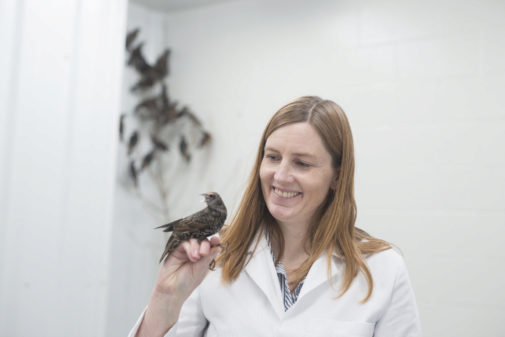- Chemical products: Bees 'addicted' to lethal pesticides
- Public health.Exposed to pesticides day by day
The next springs threaten to be increasingly silent. Insect and bird populations decrease at a dizzying speed and scientists point in the same direction: neonicotinoid pesticides . This Thursday, the journal Science publishes a new investigation, carried out by scientists in the US and Canada , which shows the relationship between one of the most widely used insecticides worldwide - imidacloprid - and the dramatic decline of wild birds. Result: 'anorexic' birds; stunted
The study notes that, even in small amounts, imidacloprid causes weight loss and delays in bird migration , two effects that seriously impair their chances of survival and reproduction.
"We have used doses that correspond to what a bird could ingest in the natural state," says Margaret Eng , a post-doctoral student at the Center for Toxicology at Saskatchewan University (Canada) and lead author. "The specimens affected by imidacloprid ate less and delayed their migration, since they needed more time to recover their energy reserves."
Previous work had shown that neonicotinoids indirectly affect the feeding of many birds by reducing insect populations .
But in recent years new studies are emerging that demonstrate a direct impact on your body, which occurs when you consume seeds treated with the insecticide. The presence of these neurotoxic compounds in the regions of passage would be contributing to the general decline of the population observed in many migratory species.
Fast decline
Last year researchers from the National Museum of French National History confirmed the disappearance of a third of the birds from the Gallic territory , in a period of only 15 years. Data that the authors described as "close to an ecological disaster" and attributed to intensive agricultural practices.
In Spain, the results of the SEO / BirdLife monitoring programs are in the same line: the populations of 37% of birds that pass through our country have decreased , a trend that affects species as representative as the swallow or the sparrow .
In addition, this Science study indicates that the damage can be extensible to other molecules, as the authors explain. "The other neonicotinoids have very similar profiles in terms of their chemical structure," says Christy Morrissey , an ecotoxicologist at the same center.
"We have performed additional tests to estimate the effects on the three main ones (imidacloprid, clothianidine, thiamethoxam) and we have found that imidacloprid is the most toxic, but that thiamethoxam also causes weight loss."
In 2015, an investigation published in Environmental Science and Pollution Research included a synthesis of almost 150 scientific studies in which they pointed out the impacts derived from the toxicity of these substances in mammals, birds and invertebrates.
However, until now, researchers had not been able to assess how this exposure occurs in real conditions. To achieve this, researchers have used new light marking technologies and a collaborative network to monitor the effects of white-crowned sparrows (Zonotrichia leucophrys) in their natural habitat . Since the researchers used direct doses in the controlled specimens, they were able to confirm a cause-effect relationship between exposure and migration delay and not just a correlation.
Widespread pesticides
The main difference between neonicotinoids, which became popular in the mid-90s, and other pesticides is their method of use. They are not usually applied as an aerosol, it is more common for them to be used to treat the seeds. These are insecticides called "systemic", since their toxic agent circulates through the vascular system of the plant, not only in the leaves but also pollen or nectar .
"The seeds treated with it must be buried and the remains removed from the soil," Morrissey warns. "But even more important: current agricultural practices, which rely heavily on hazardous pesticides, should be diversified to end land resistance to pests, but also to protect biodiversity."
In 2012, the European Food Safety Authority (EFSA) issued a first warning stating that many plant protection products were being commercialized without having been properly evaluated.
A year later, the Commission decided to restrict the use of three neonicotinoids (clothianidine, imidacloprid, thiamethoxam), which were completely banned in 2018. Since then, EFSA has proposed several changes in the pesticide evaluation process , mainly because of its effects in bees, but for now the Commission has delayed the consideration of these recommendations until after the summer of 2021.
Although manufacturers have argued that they present a very low risk to vertebrates, there is increasing evidence that neonicotinoids act, even at low doses, on the central nervous system of birds.
"Our study shows that the damage goes beyond bees: birds are also affected, which should concern us all," says Eng. This same year another work published by Swiss researchers points to the long life of these molecules once in nature.
According to the criteria of The Trust Project
Know more- Health
- Science and Health
Health Autonomous health is unequal ... but nobody knows which is the best
Sanitary Alert Detects batches of shredded meat contaminated with listeria packaged in June
Study Income from heart attack decreases in summer

